Top consumer trends of 2023
How can you prepare your brand for the rocky year ahead? Using Attest data from 2,000 US consumers, we’ve identified the top 18 trends to know.
Sentiment trends
Trend 1: Young people feel positive!
Compared to Boomers, Gen Z are more than twice as likely to say they’re feeling “very positive” (35.8% versus 15.8%). Millennials are also keeping their chins up: 32.4% feel very positive right now.
Overall, inflation hasn’t impacted positivity as much as you might imagine; positive sentiment has only declined by two points from a year ago, standing at 64.1%.
Top tip: Adjust your messaging – older and younger consumers have notably different outlooks.
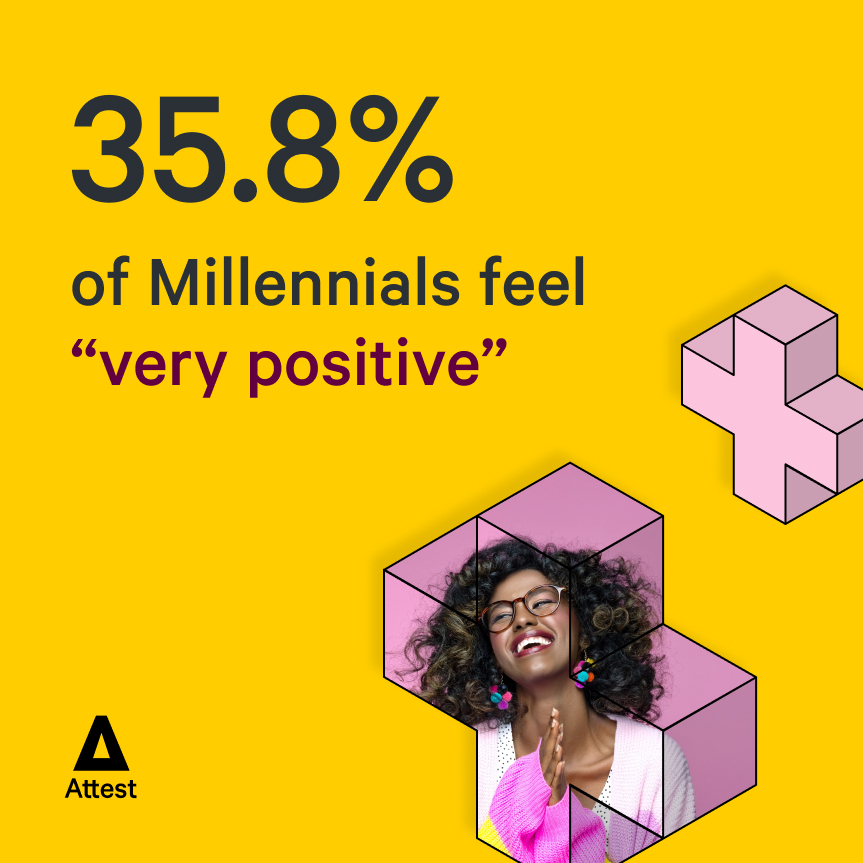
Trend 2: Food insecurity a big issue
Nearly a quarter of consumers are worried about being able to afford groceries, making it the issue Americans are most concerned about heading into 2023.
But fears vary across demographics; 23.7% of Gen Z are fretting about gas prices. Boomers, on the other hand, are more likely to be worried about political upheaval (24.0%).
Top tip: Identify your target consumers’ worries and find ways to support them, for example, through partnerships with other brands.
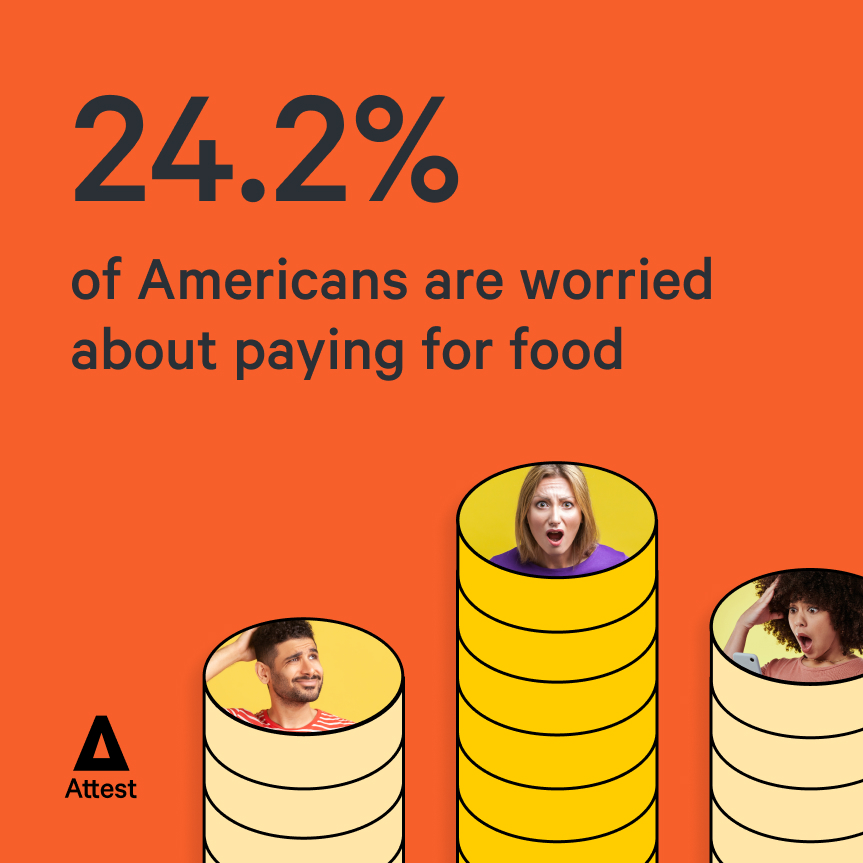
Want to drill down further?
Send a survey to target consumers.
Get started for free
Trend 3: Funny messaging out of favor
Last year, American consumers wanted brands to make them laugh but appetite for humorous messaging has fallen 5.4 points to 50.7%. Younger consumers in particular show less interest in funny ads.
What Gen Z and Millennials most want to hear are motivational messages. In addition, Gen Z are twice as likely to respond to ‘inclusive’ messaging than older consumers.
Top tip: Motivational messaging is popular across demographics – aim to inspire with your marketing campaigns.
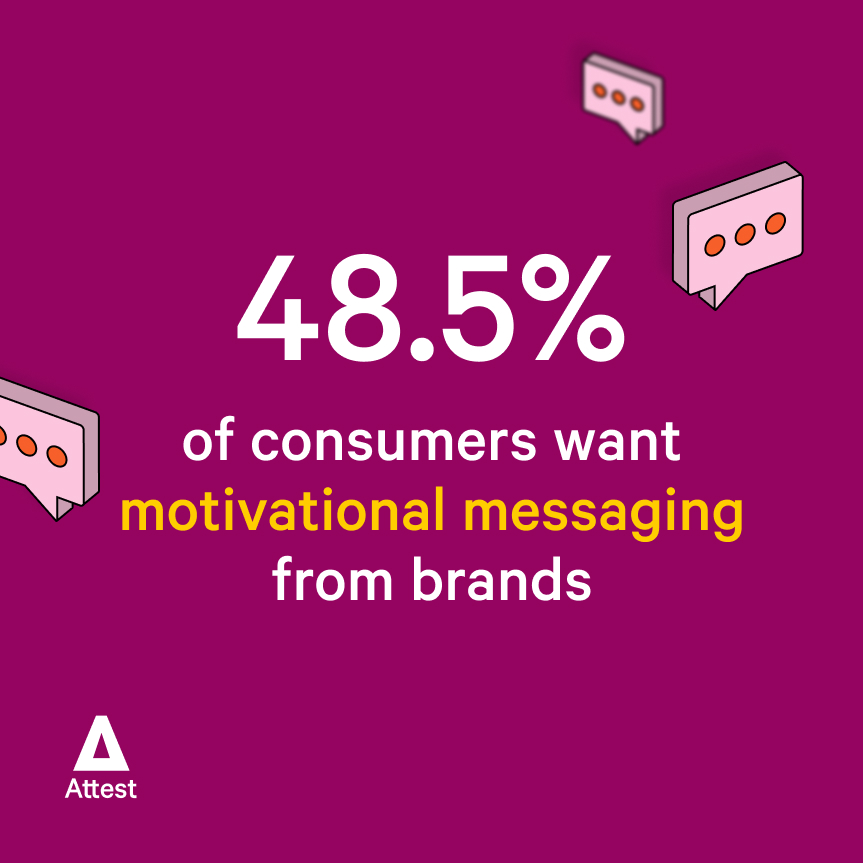
Trend 4: Brands must “be political”
There’s a growing desire for brands to take a stand on political and social issues, like the overturning of Roe v. Wade. We see this in the 6.2 point increase in people wanting brands to represent women’s rights (29.5%).
Overall, poverty and inequality is the biggest topic for brands to address (35.9%), followed by racism – although this has declined in importance by 4.5 points to 30.8%. Meanwhile, gun violence is deemed as important as climate change (both 29%).
Top tip: Playing it safe may no longer be an option for brands who really want to represent their consumers.
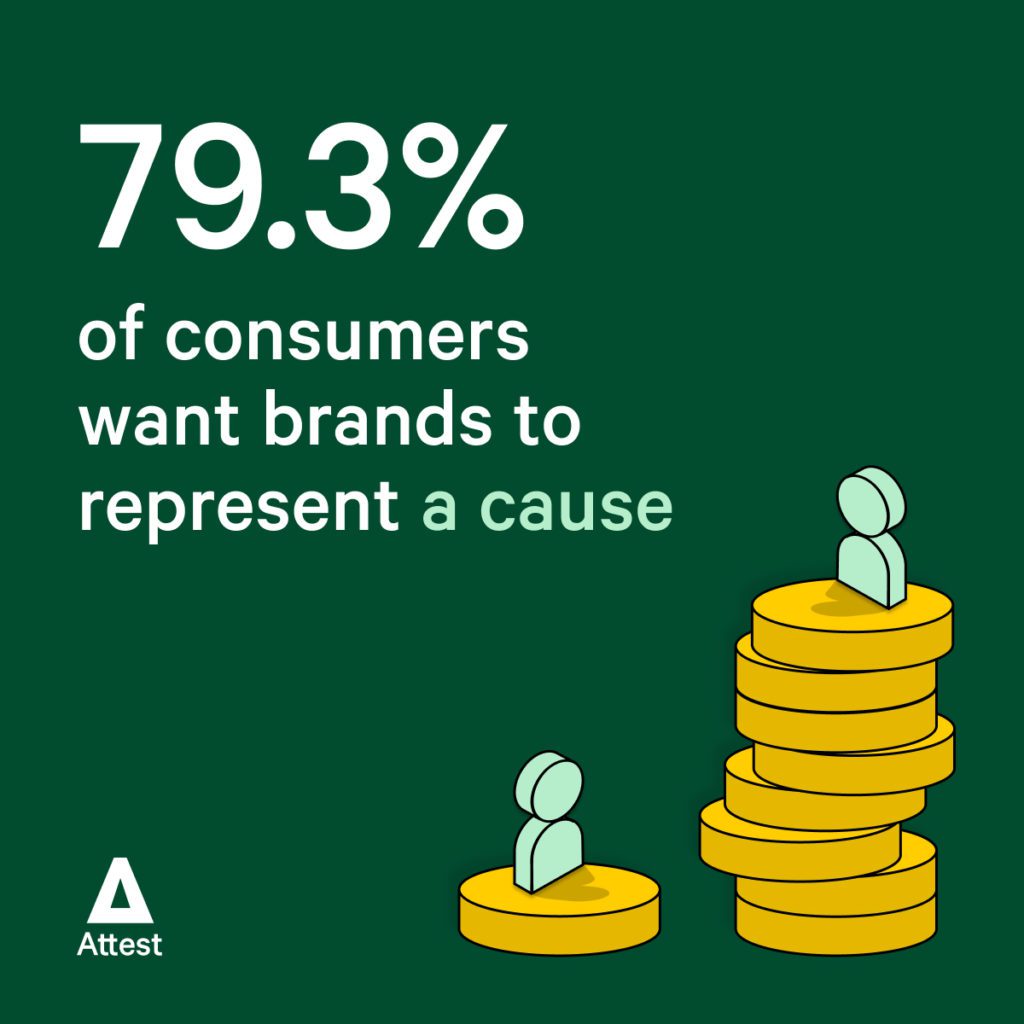
Marketing trends
Trend 5: Millennials ❤️ email marketing
Millennials are significantly more likely than other demographics to welcome daily marketing emails from brands they’re interested in: 23.8% versus 14.7% of Gen Z and 9.7% of Boomers.
But email remains a valuable channel for brands to reach all age groups, with ‘once a week’ being the preferred cadence for mailings. The percentage of consumers who don’t want to receive marketing emails is just 12.4%.
Top tip: Ramp up your email marketing to stay front of mind, but make it worth your customers’ while with discounts and exclusive offers.
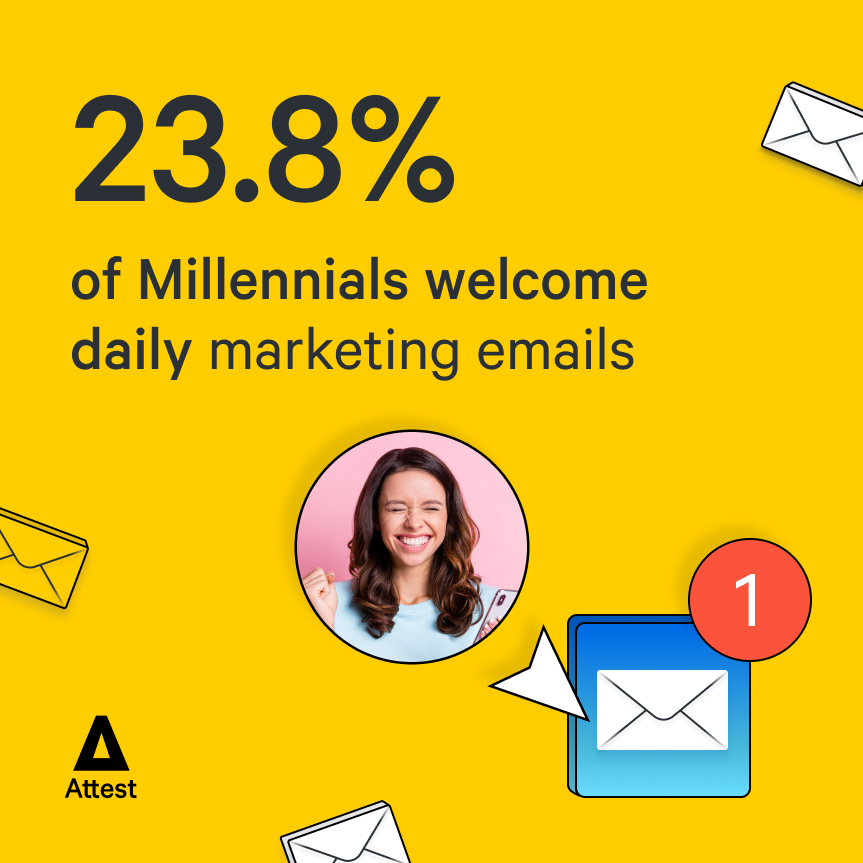
Trend 6: TikTok taking off for brands
The number of consumers who engage with brands on TikTok has increased by 10 points since last year, to 35.0% – the highest growth of all the social platforms.
Gen X and Millennials are especially likely to interact with brands on TikTok: 60.8% and 42.3% respectively. Overall engagement with brands on social media has increased by 4.7 points to 88.0%.
Top tip: TikTok content needs to have an authentic, homemade quality, so be prepared to bend your brand guidelines.
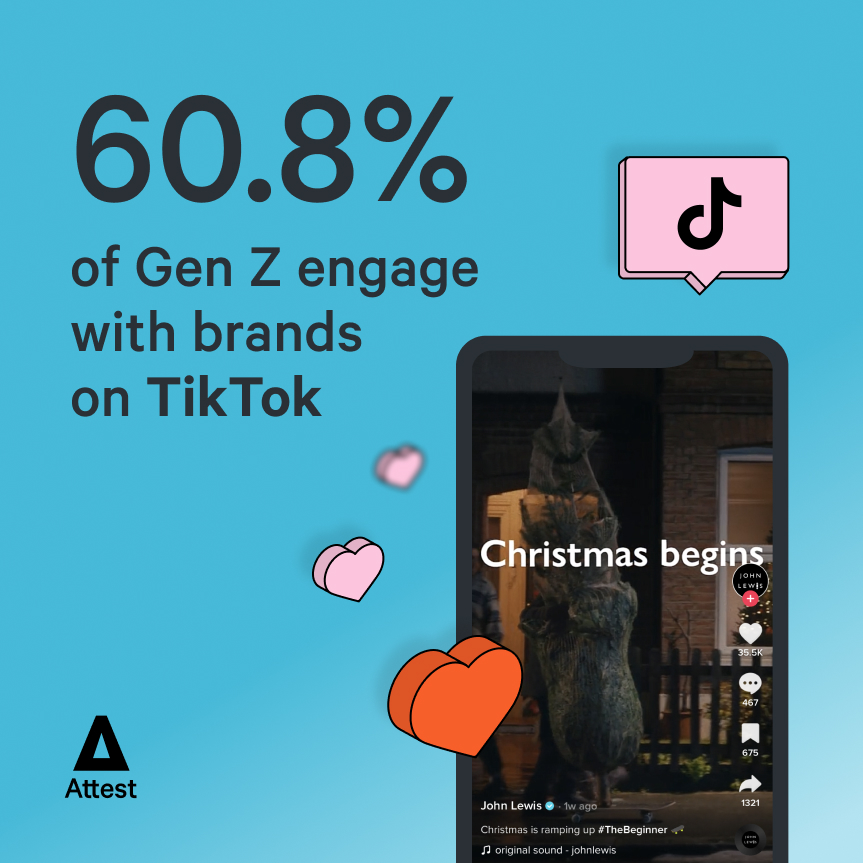
What’s the outlook for your brand?
Speak to your customers today
Send a free survey
Trend 7: VR marketing is an opportunity
Ownership of virtual reality headsets is growing; more than a quarter of US households have one. Millennials are the biggest adopters of VR, 36.6% have a headset (including 9.9% who own more than one).
A further 28.9% of Americans who don’t have a VR headset state they plan to get one. Boomers are least likely to adopt VR technology, with 68.9% saying they have no plans to use it.
Top tip: Advertising opportunities in virtual worlds include billboards that brands can use without knowledge of the metaverse.
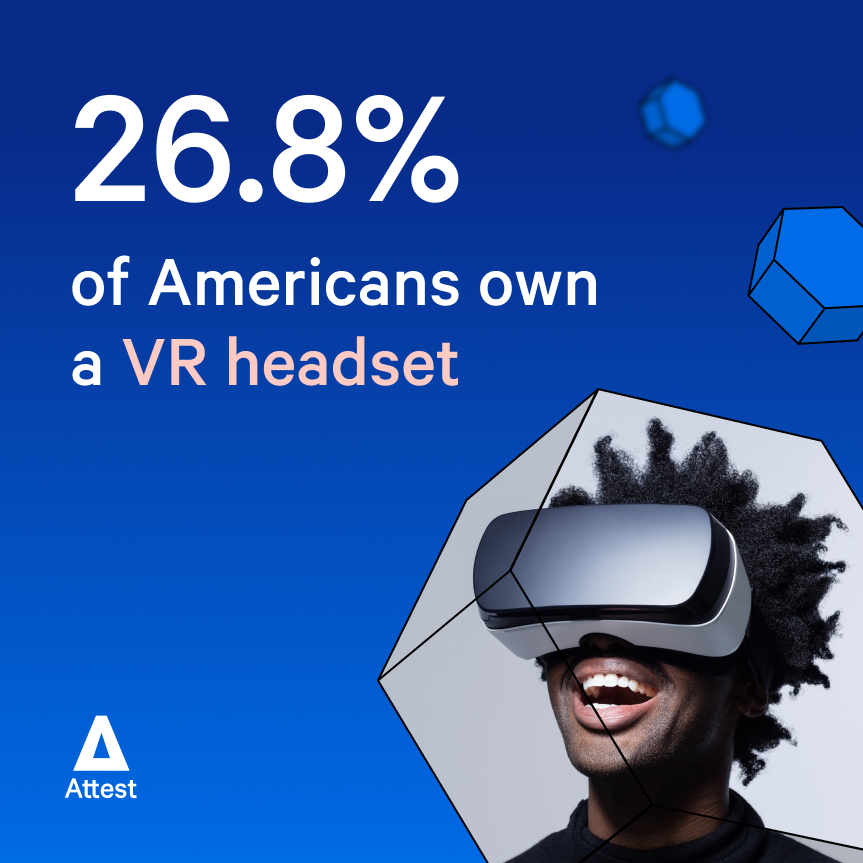
Trend 8: Millennials populate metaverse
Millennials have the highest awareness of metaverse platforms. Twice as many are familiar with Meta Horizon Worlds (Mark Zuckerberg’s offering) than other demographics (23.7%), suggesting they will be first to populate it.
Overall, Roblox – a virtual world for kids – has the strongest awareness among metaverse platforms, recognized by 50.7% of Americans, rising to 61.1% of Millennials, and 75.4% of Gen Z.
Top tip: Brands can create virtual products in Roblox, using it as a shop window to attract young consumers (and their parents).
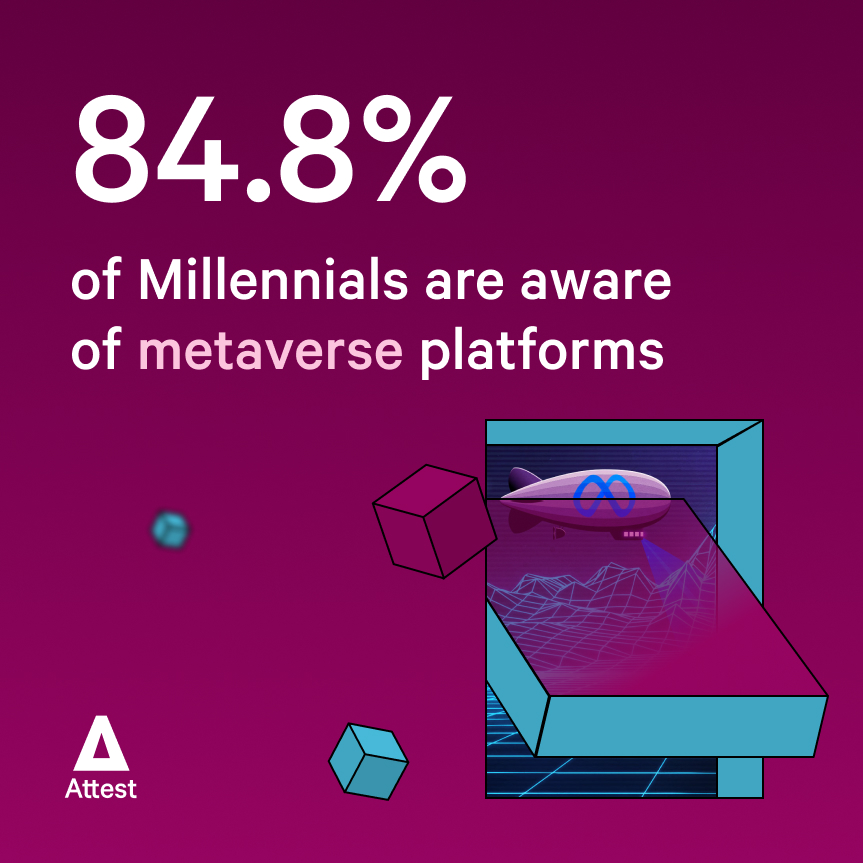
Shopping & spending trends
Trend 9: Consumers spend cautiously
It’s no surprise that inflation is having an impact on consumer spending, but our data highlights the change on last year: we see a 5.4 point increase in “fairly cautious” spending and a 4.7 point increase in “very cautious” spending.
Older consumers are twice as likely to be keeping a tight hold of the purse strings: 77.9% of Boomers are spending cautiously versus 39.2% of Gen Z.
Top tip: Focus on value-driven messaging, especially for shoppers aged 40 and older.
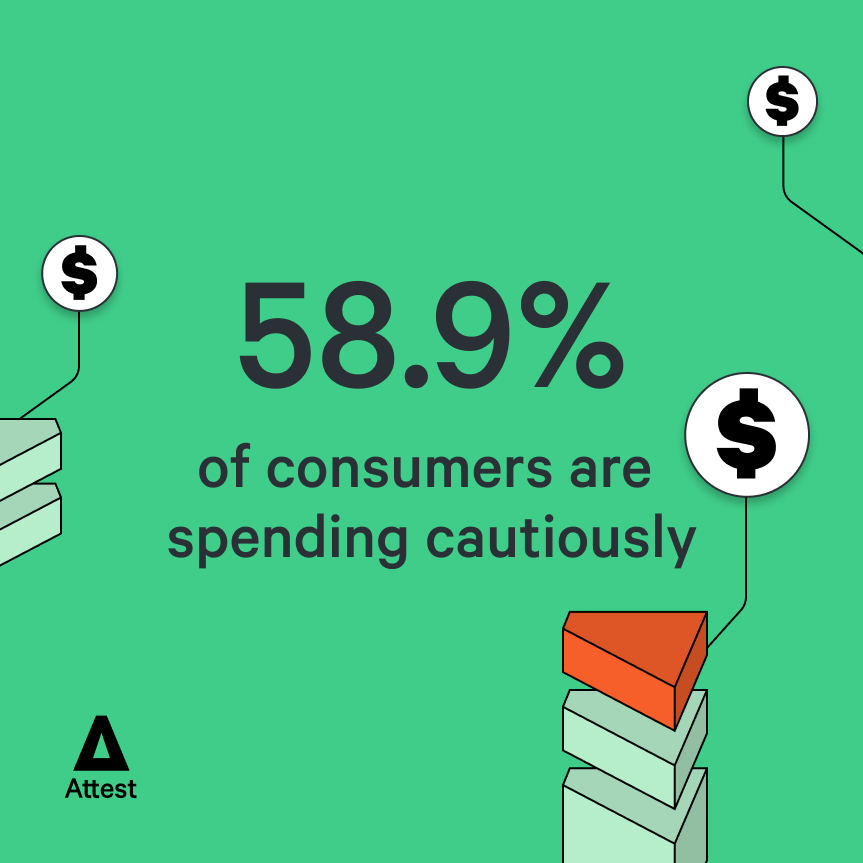
Trend 10: Older shoppers favor stores
The pandemic increased adoption of online shopping among older consumers, but Gen X and Boomers are returning to Main Street. Nearly 41% of Gen X say they now “mostly or always” shop in-store, as do 44% of Boomers.
Younger shoppers, on the other hand, still favor online: 36.3% of Gen Z and 39.5% of Millennials “mostly or always” shop online.
Top tip: A third of Americans split their purchases between online and in-store, meaning multi-channel distribution is the safest bet.
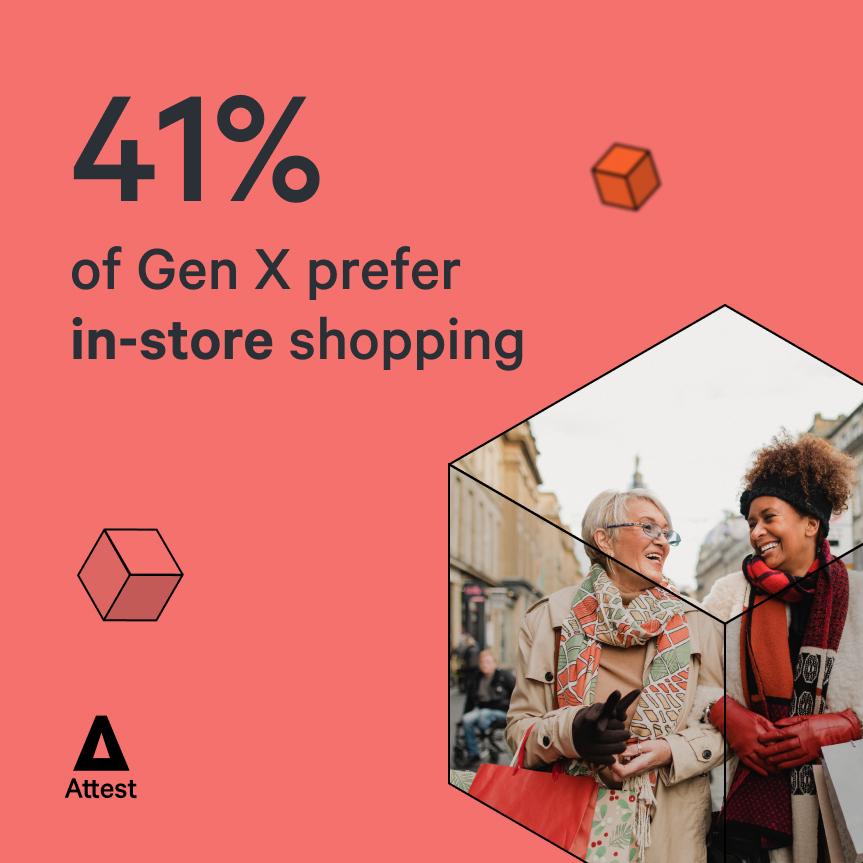
Attest is a nimble and robust enough platform to gather insights for our domestic and international business, allowing us to measure, grow, and innovate.
Monica Aguilo, Senior Director – Consumer Insights, Strategy, & Social Impact

Trend 11: Amazon gains market share
Just when you thought Amazon’s profits couldn’t get any bigger, our data shows a net +11.1% of consumers plan to increase their shopping on the marketplace in 2023.
The growth will be driven by Gen Z, a net +23.8% of whom say they’ll shop on Amazon more. Although they’re not giving up on local businesses: a net +15.0% say they will shop locally more too.
Top tip: Nurture Amazon customers with marketing materials incentivizing them to shop directly with your brand next time.
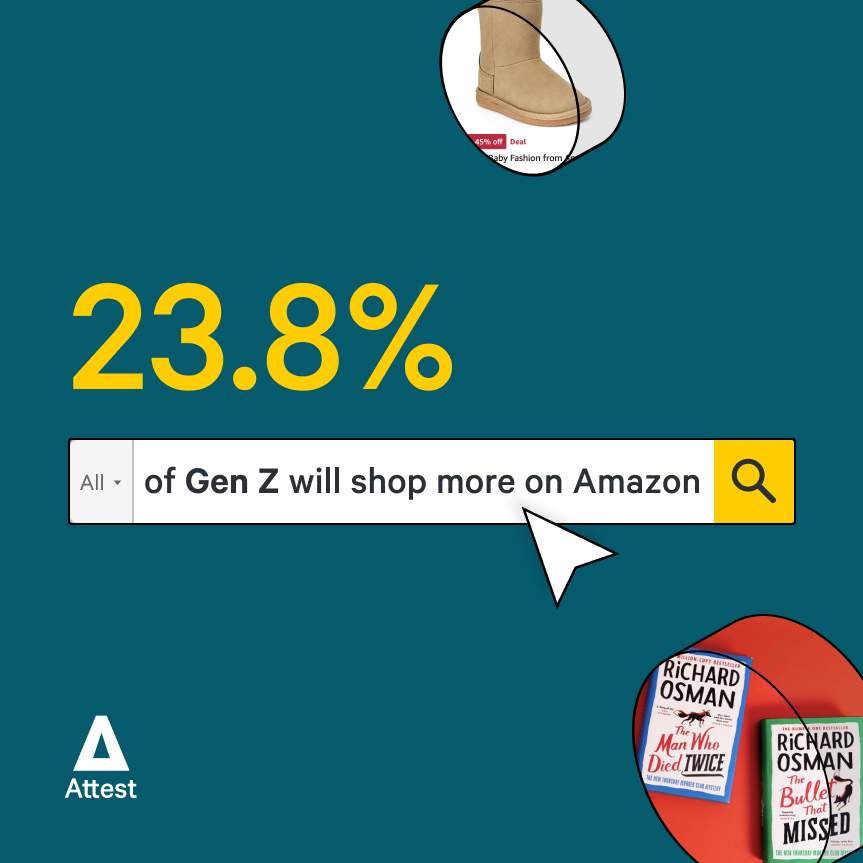
Trend 12: Fast fashion faces a reckoning
The environmental impact of fast fashion has been in the spotlight lately and it seems to have had an impact. A net -10.4% of consumers say they will buy fewer fast fashion items in 2023.
Consumers aged 40+ are especially likely to make this commitment, with a net -19.1% of Gen X shoppers planning to buy less. But fast fashion’s biggest consumers (Gen Z) will also cut back: -4.9% net.
Top tip: Join clothing brands like PrettyLittleThing, Zara and Shein by introducing a resale platform to help reduce waste.
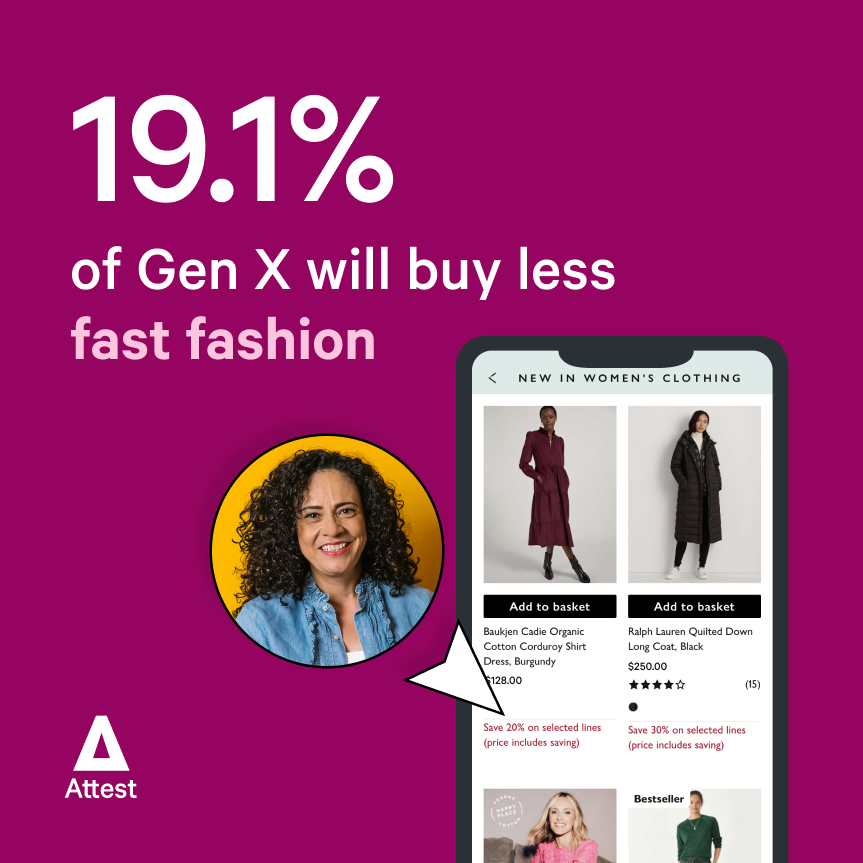
Trend 13: Streaming services chopped
Subscriptions are a casualty of the rising cost of living, with 68.9% of consumers canceling one. A third have axed a TV streaming service to cut costs and 20.9% have canceled a music streaming service.
Younger consumers are more likely to cancel: a quarter of Millennials have stopped their Amazon Prime subscription and 17.8% have canceled a product subscription, while 20.4% of Gen Z have canceled a physical gym subscription.
Top tip: Introduce the ability to pause subscriptions rather than lose customers altogether.
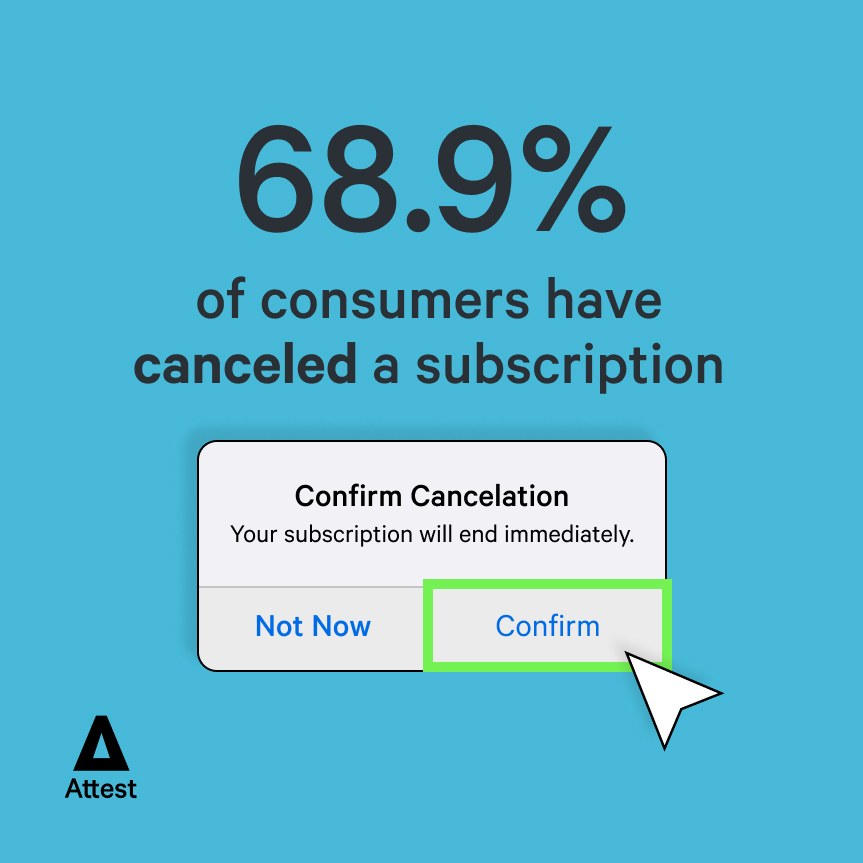
Lifestyle trends
Trend 14: Socializing is back
Despite the roll out of the Covid-19 vaccination campaign, many Americans were keeping their social circles small last year. This year, though, socializing has rebounded.
We see a 10.5 point increase in the percentage of people socializing with friends at least once a week (63.3%). Doing sport weekly has also grown in popularity by 7.4 points (36.6%), with Gen Z the most active.
Top tip: Celebrating the power of social connections can help keep consumers’ morale high during the economic downturn.
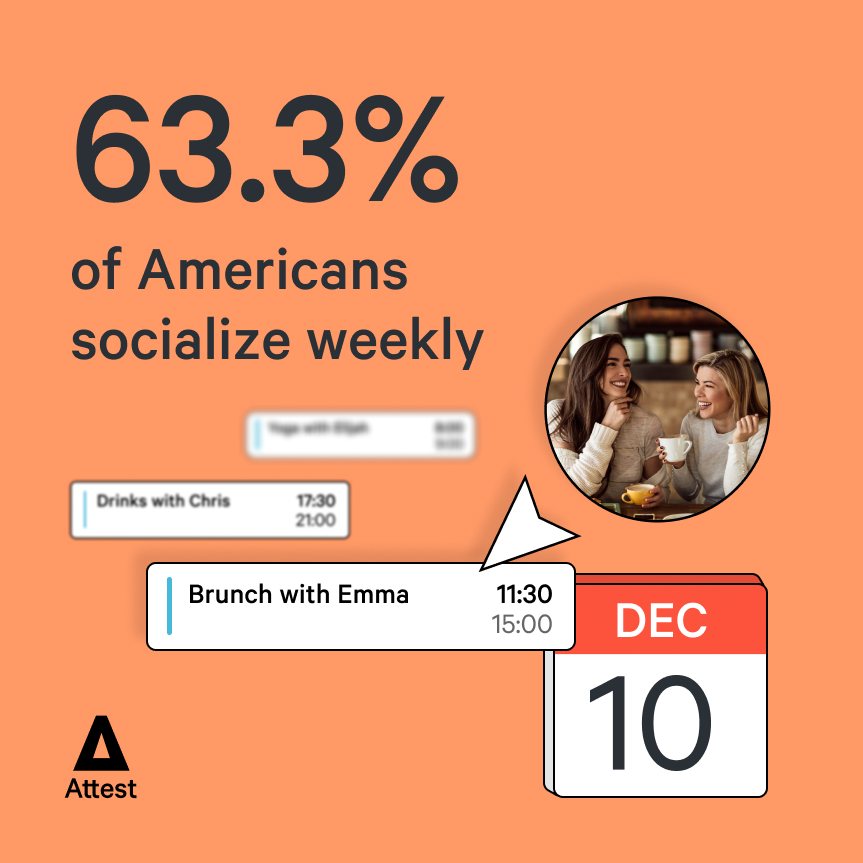
Trend 15: Diets changing (for the worse)
More than a third of consumers say the rising cost of food is having a “big” impact on their diets, while a further 34.6% say it’s having a “medium” impact.
The biggest issue is being able to afford fresh quality foods like meat, fruit and vegetables (40.9%), while 33.8% can no longer afford their preferred brands and 39.1% struggle to eat out.
Top tip: Reduce pack sizes to bring down the retail price and keep your customers.
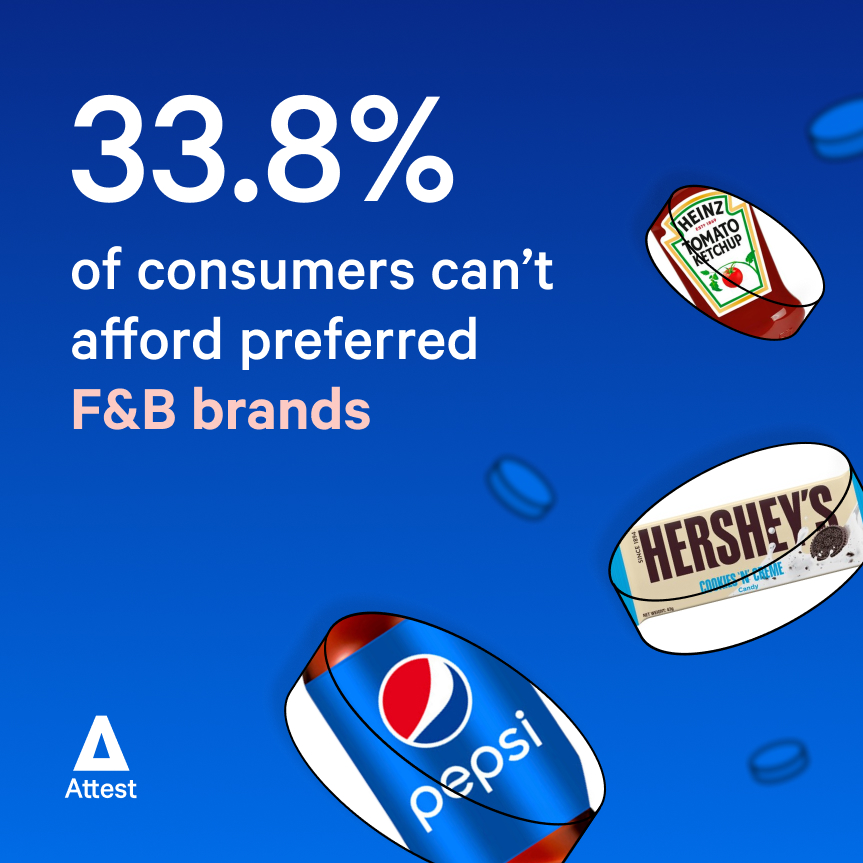
Trend 16: WFH here to stay
Elon Musk might be trying to put a stop to it at Twitter, but the WFH movement shows no signs of abating. Our data evidences no significant decline since last year.
Over 27% of people split work between home and the office, while 15.6% work from home five days a week. Only a quarter of workers never work from home.
Top tip: Reconsider advertising that targets commuters, which might not be as effective due to reduced traffic.
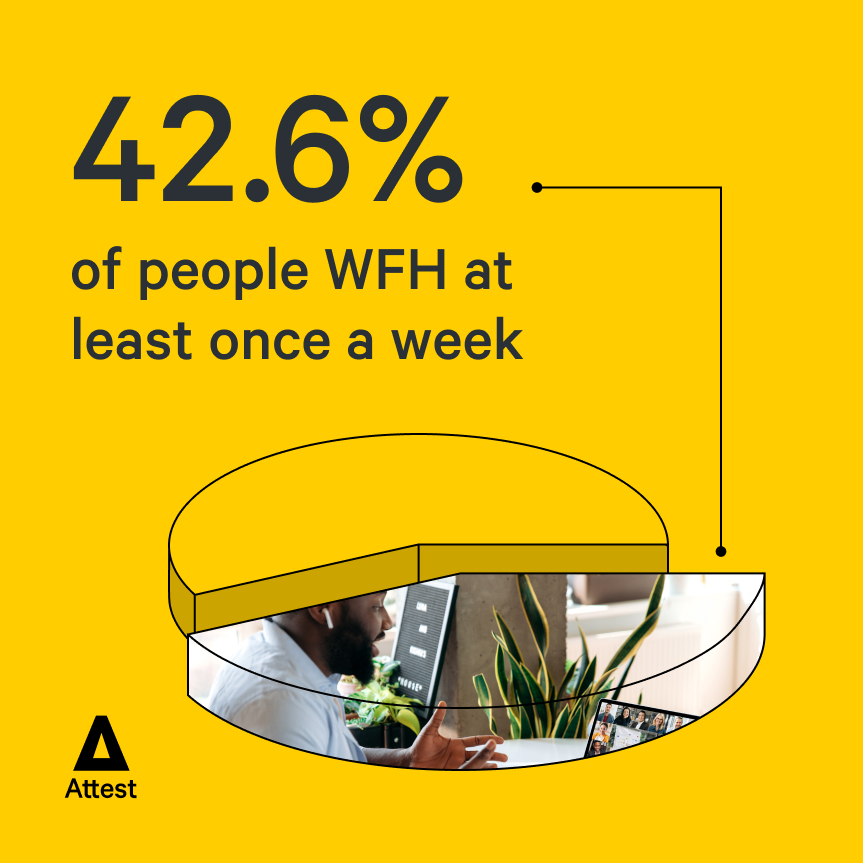
Trend 17: Second hand losing its stigma
Thrift shopping will be a big pastime in 2023, with 38.0% of consumers saying they’ll be hunting for second hand bargains to combat the rising costs of inflation.
In turn, nearly 38% of consumers will be selling their unwanted goods – especially Gen Z and Millennials – meaning the pre-loved market will be booming.
Top tip: Tap into the thrifty mindset with ideas to help consumers reuse and recycle goods.
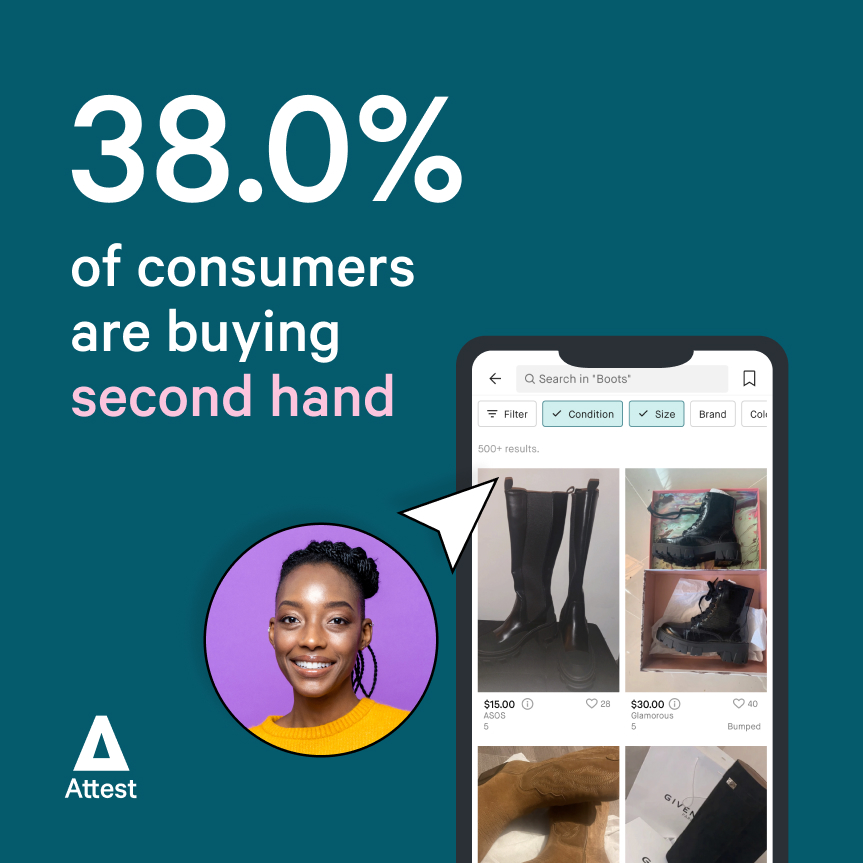
Trend 18: Rampant consumerism is out
Frugality is cool; 43.3% of consumers say they are buying fewer things and consuming less – that’s a 9.6 point increase on last year.
This trend is seen most strongly among shoppers aged 40+. Another environmental trend sees Americans cutting down on their car usage, with a 10.4 point increase in the number of people ditching their cars, to 33.9%.
Top tip: While price is the primary motivator for 2023, quality should not be overlooked as consumers look to buy fewer things and keep them for longer.
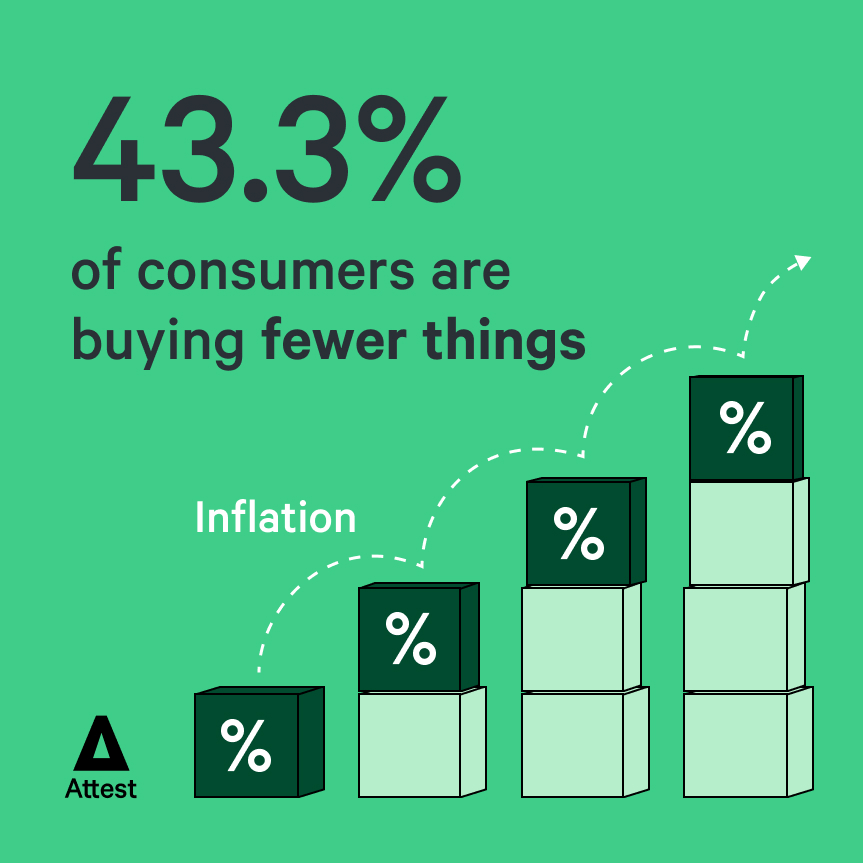
What opportunities do these trends represent for your brand?
Get more data
Get a direct line to
inflation-squeezed consumers
Quick and easy to run surveys
Get going in minutes with our intuitive platform and get results quickly, our average survey closes in 1 day 19 hours.
High data quality
We use automated and human checks on your data, you can be sure you’re making the right business decisions.
Research guidance
You’ll be supported by a dedicated industry professional every step of the way to help you get the most from your research.
Find your target audience
Our audience lets you access 150+ million people across 59 countries, and use filters and quotas to make it as targeted as you need.